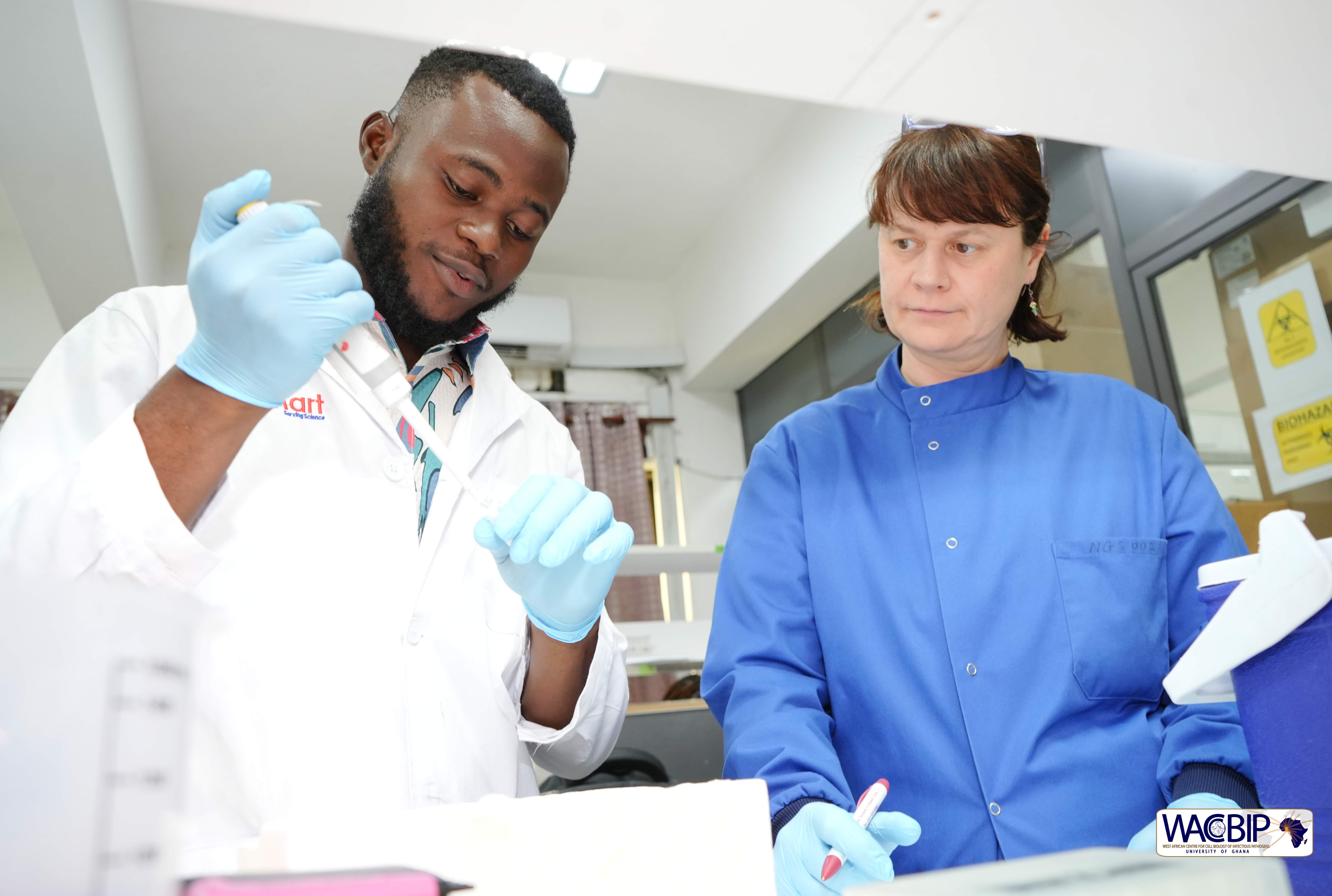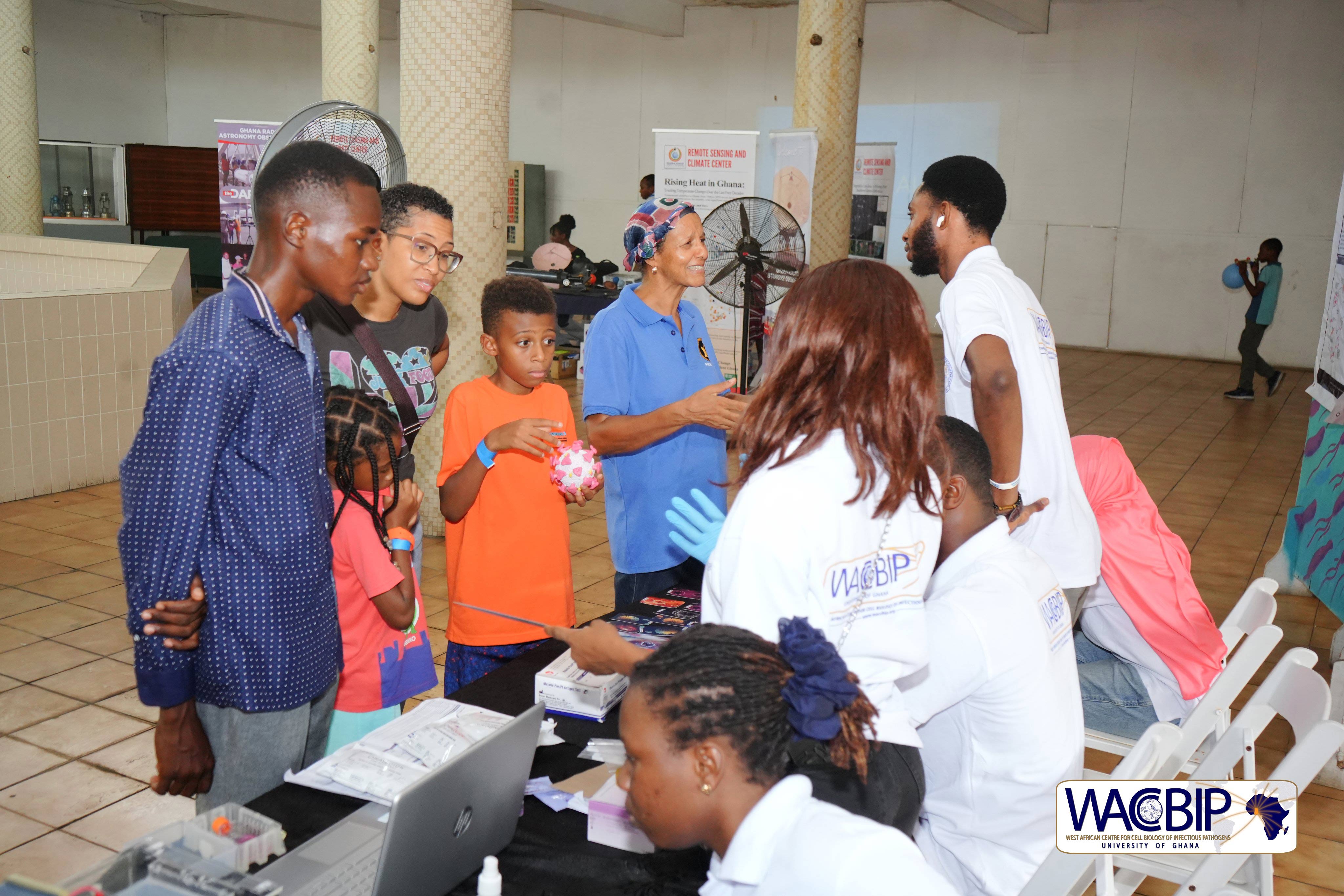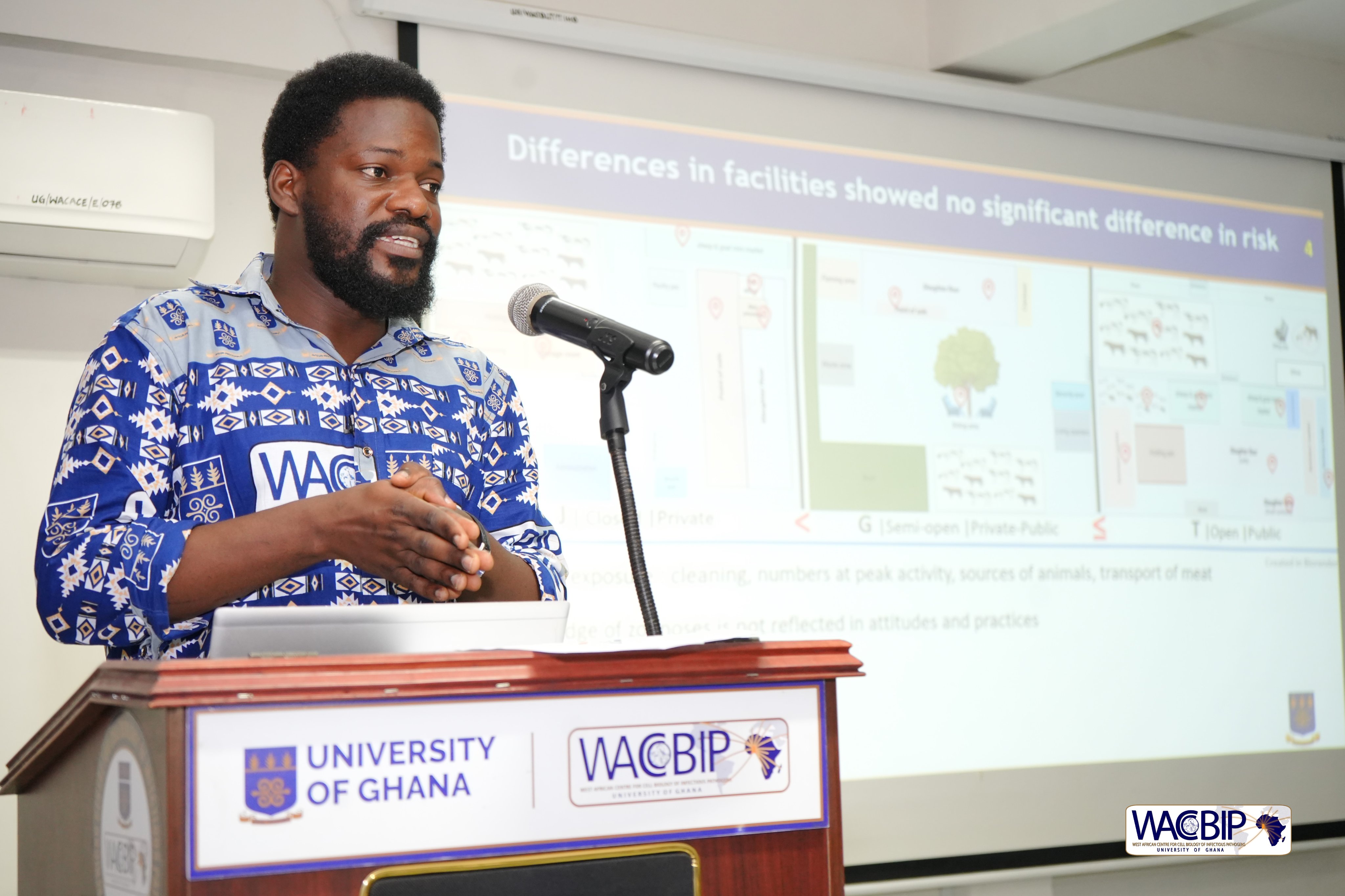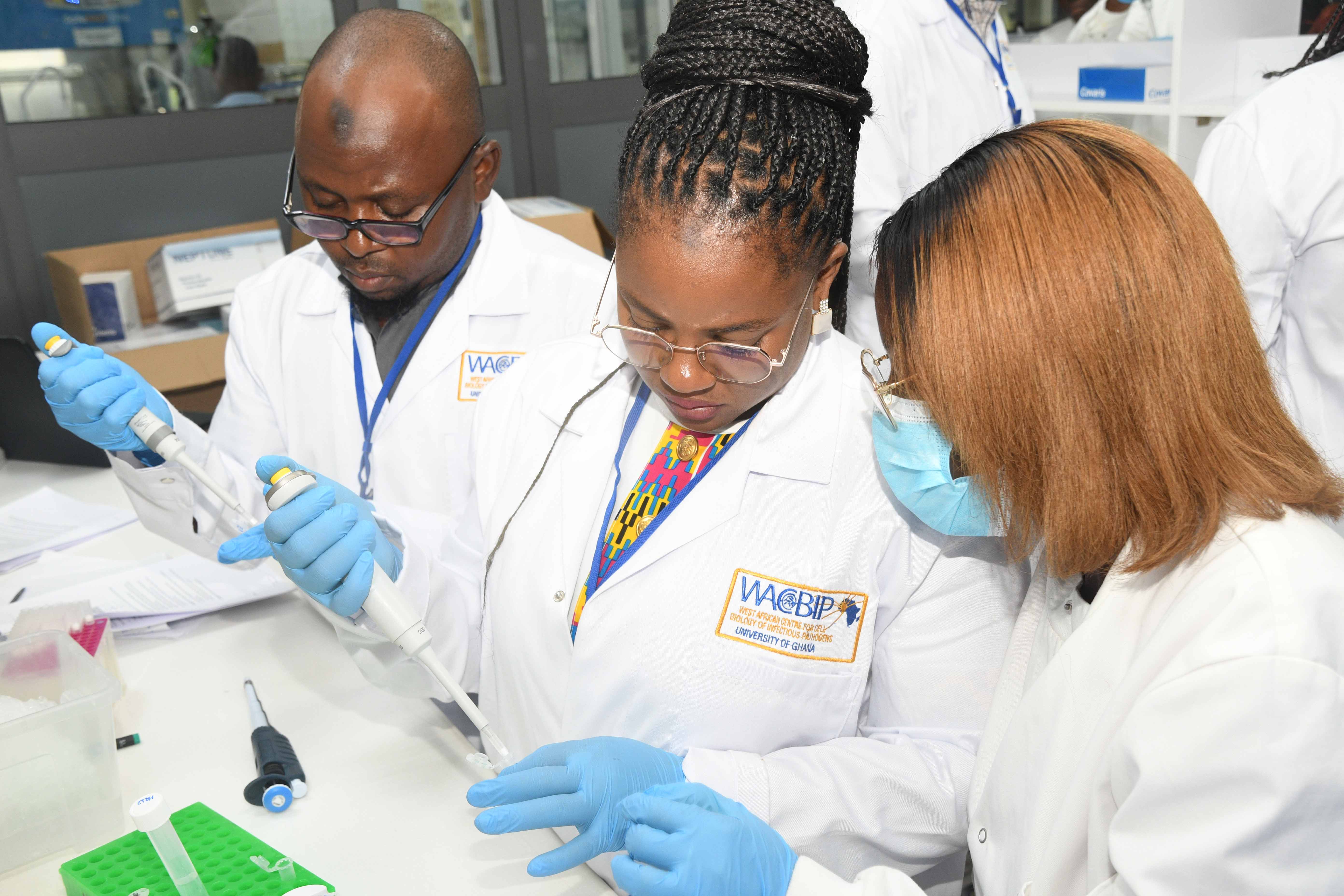The West African Centre for Cell Biology of Infectious Pathogens (WACCBIP), completed between December 2020 and February 2021 a series of outreach events in parts of southern Ghana, providing free screening for exposure to SARS-CoV-2, under three additional phases of its overall COVID-19 research programme.

The COVID-19 Seroprevalence team at Akropong-Akuapem in the Eastern Region[/caption]
The events, which were held in the Madina market, the Accra Mall and the Achimota Retail Centre in the Greater Accra Region, Akropong-Akuapem in the Eastern Region, and the Cape Coast Teaching Hospital at Cape Coast in the Central Region, followed the first round of events held from August to October 2020. The events helped extend the data collection process under WACCBIP's COVID-19 seroprevalence study which aims to estimate, using serological analysis, the patterns in the distribution and changes over time in the outbreak of the disease within the Ghanaian population. More than 1000 people were screened overall.
Speaking on the importance of the phased structure of the study, Dr. Peter Kojo Quashie, a senior research fellow at WACCBIP, explained that the process was necessary for tracking community spread of the virus and tracing infections across the country.
“This study was a multi-site repeated observational cross-sectional study carried out over a period of 7 months from July 27, 2020 to February 26, 2021,” Dr. Quashie said. “Our results lay the foundation for more extensive SARS-CoV-2 surveillance in Ghana and the West African sub-region, including deploying rapid antigen test kits to determine the actual infection burden. Also, based on our findings, there is a need for increased enforcement of COVID-19 mitigation protocols and more effective public education.”
He explained the rationale behind the locations selected and the purpose of the segmentation of the target populations. He said it was important to gather more information on the socio-economic factors associated with exposure in follow-up to the Phase I findings that suggested that lower income populations were more susceptible to being exposed to the virus than higher income populations.
“Looking at Ghana as a whole, we felt that to get a good cross-section of the public, you either had to go to the malls to catch the middle income to upper income level people, or you had to go to the market where a huge number of people, mostly in the lower income brackets employed in the informal sectors, would reside,” Dr. Quashie said. “We also looked at the medical profession. In most countries, medical professionals are the most exposed. So, that is where we expected to find really high levels of exposure. Within that, we focused on COVID treatment centres and then regular centres, which were not specifically treating COVID patients. We also did the small town in the Eastern Region to basically verify if small towns would have similar levels of exposure to metropolitan areas.”
Dr. Quashie explained that it was vital to continue to collect data across various sites to ensure that the information on the spread and nature of infection associated with SARS-CoV-2 in Ghana is as accurate as possible. He said that running various phases was a good way to update information gathered during the early months of the pandemic to track the evolution of the virus and how it has affected the Ghanaian population over time.
“In the first phase [August to October 2020], what we established was that there was a socioeconomic difference [linked to] high level COVID-19 exposure. So, basically, people who had a lower socioeconomic standing by way of work, income and education tended to have high levels of COVID-19 infection because these people tended to be employed in the informal sector; always outside, always out and about, and we needed to see if that was true in different markets,” Dr Quashie said. “We [also] wanted to know if that would change over time. So, we ended up doing a second phase, a third phase and finally we did a fourth phase.”
According to Dr. Quashie, the follow-up phases to the seroprevalence study provided further insight into the levels of exposure in the various locations. He said that Phases II and III screening activities in October and December 2020, respectively, showed no evidence of increased seroprevalence, indicating either a reduced transmission rate or loss of antibody expression in a subset of the participants.
“Interestingly, both Phase II and Phase III didn't show an increase in prevalence in the markets,”
Dr. Quashie said. “What we noticed was that the rates of prevalence in the general population seemed to have plateaued. They were not going down. But then when we started doing Phase IV””which we started by doing a small town in the Eastern Region, which is quite close to Accra””we saw a 17 percent prevalence. So, we are thinking high level COVID infection is really in the major metropolitan areas.”
[caption id="attachment_6588" align="aligncenter" width="1024"]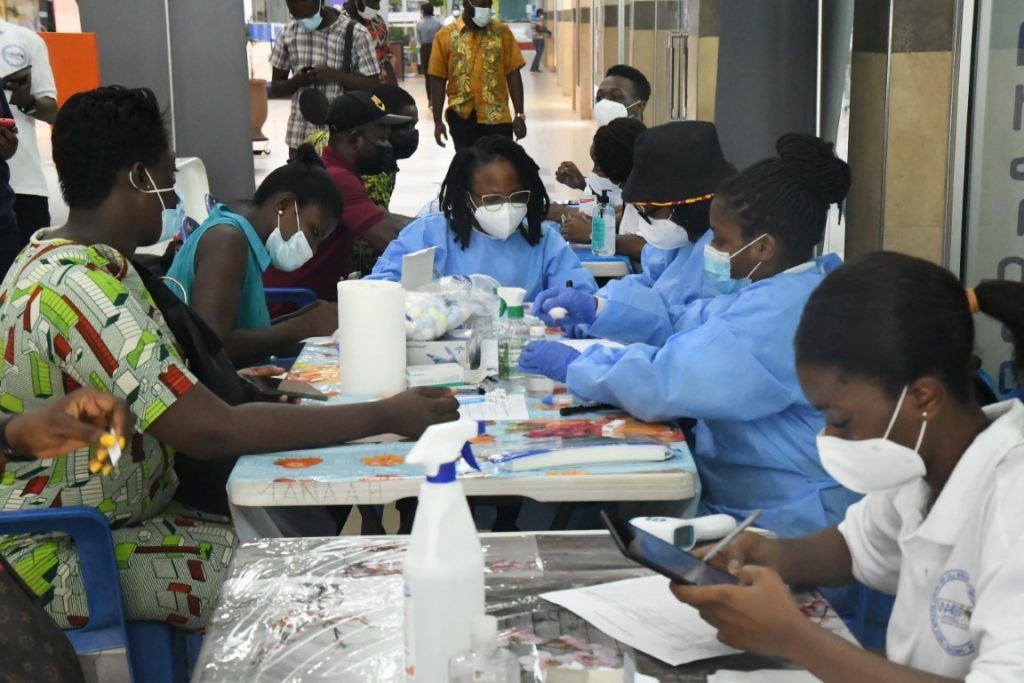
The COVID-19 Seroprevalence team at Accra Mall[/caption]
Dr. Quashie said that, as part of Phase IV, the WACCBIP team also returned to the malls and surveyed random selections of new participants. He said results showed an almost double increase in exposure rate from what was recorded during the first phase of the seroprevalence study between August and October 2020.
“We saw that the rate had doubled from the initial 13 percent. We are now looking at twenty five percent. This is probably linked to the second phase where we saw an increase in hospitalizations and infections in December and peaking in January,” Dr. Quashie said.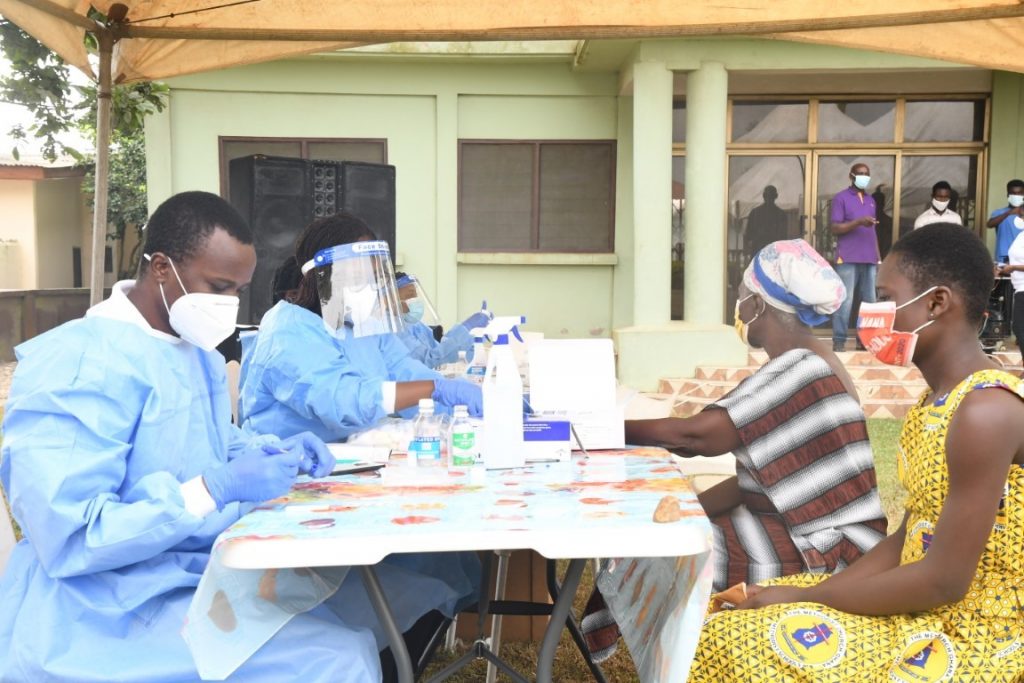
Mr. John Osei a beneficiary at Akropong Akuapem was satisfied with the process. Being his first time participating in such an exercise he encouraged other community members to participate.
“I was excited when I heard about the coming of the scientists to our community, I believe COVID-19 is real. The education on handwashing and mask wearing is well appreciated,” Mr. Osei said. “I was not afraid when I was doing the test. I am patiently waiting for my results. I will gladly accept the results, whether exposed or not.”



